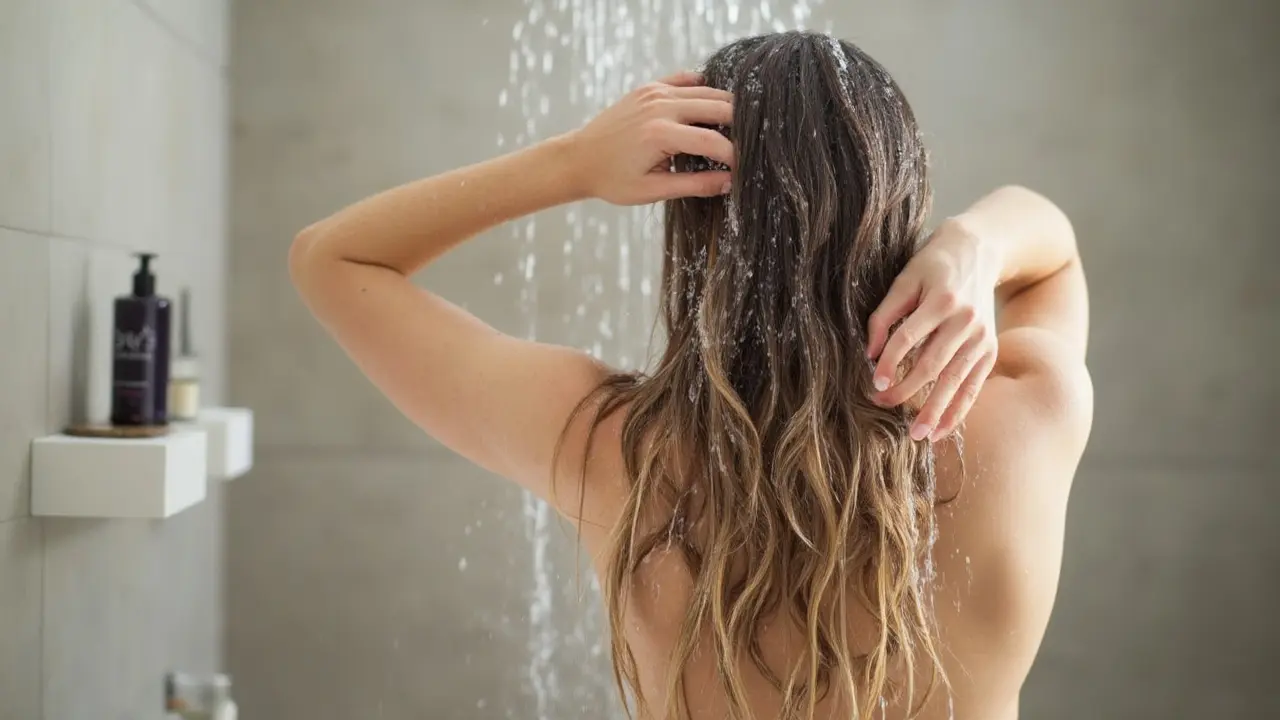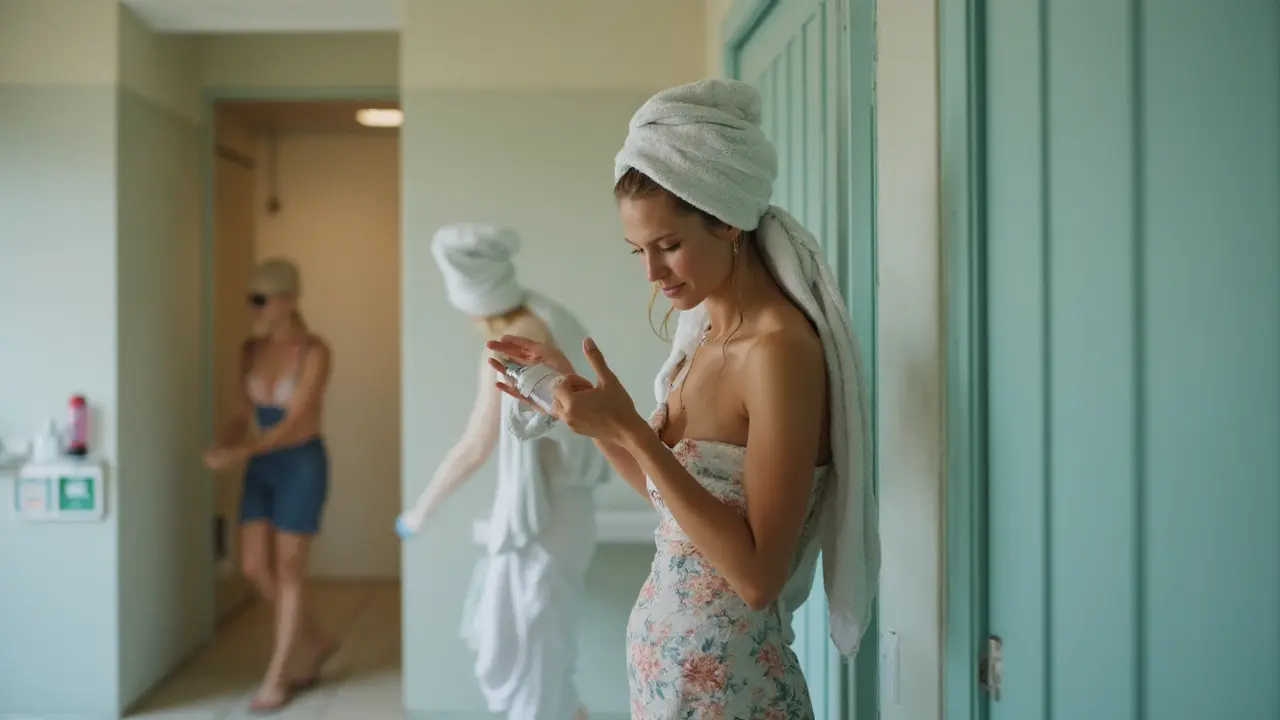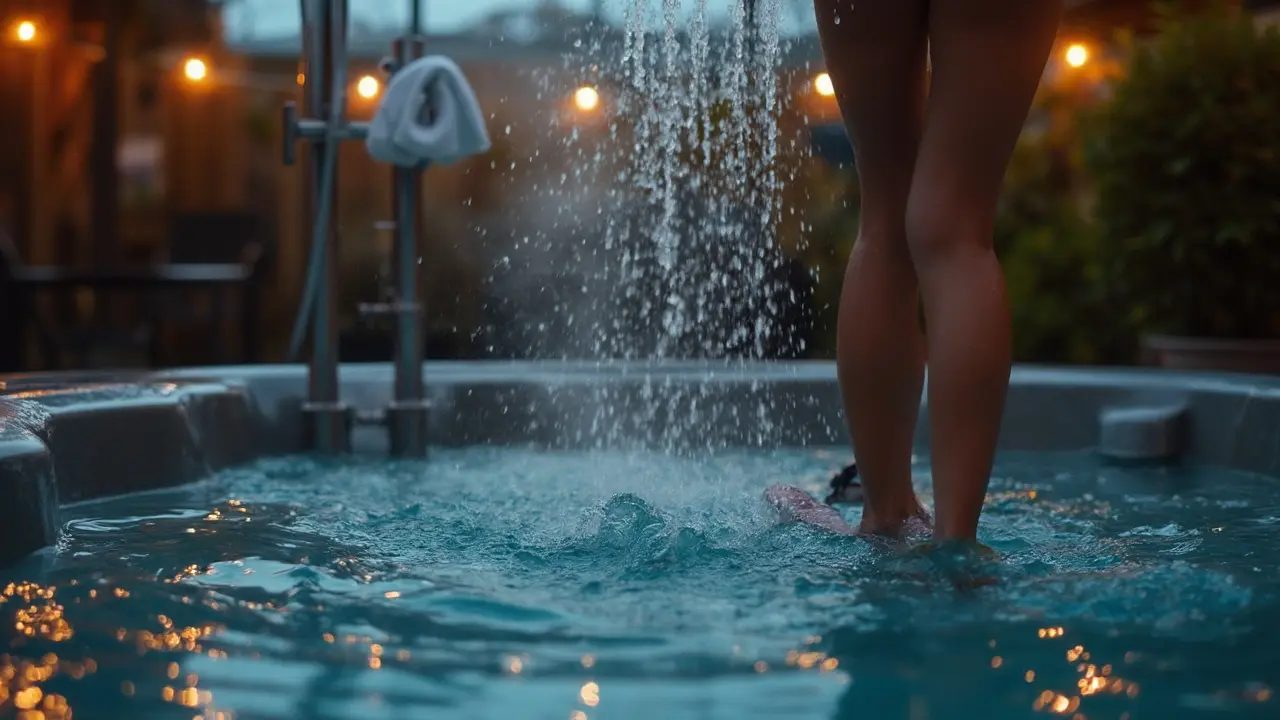You just had that dreamy soak-steam, jets, the whole bliss. Now you’re staring at the towel, wondering if you really need to shower after. Short answer: yes. Not because you’re dirty, but because hot tub water leaves chemicals and microbes on your skin and in your hair, and heat opens your pores so more stuff sticks. Skip the rinse, and you raise your odds of dry skin, itchy bumps, or that lingering chlorine-smell. I maintain a shared hot tub in my building and have learned the routine that keeps skin chill and rash-free. Let’s make this quick, practical, and easy to remember.
TL;DR: Should you shower after a jacuzzi?
- Yes-do a quick rinse within 5-10 minutes after you cool down, then take a proper soap shower within 30-60 minutes. That’s the sweet spot for most people.
- Use lukewarm water, not hot. Heat already dilated your blood vessels; a hot shower can make you lightheaded and strip more oils.
- Gentle cleanser, no harsh scrubs. Moisturize within 3 minutes after you towel off (dermatologists love this “3-minute rule”).
- Rinse swimwear ASAP and let it dry completely to avoid bacteria and odors.
- Extra cautious if the tub is public, smells strong, or your skin is sensitive. The CDC flags hot tub rash (Pseudomonas) as a real thing-showering helps reduce risk.
Exact steps: What to do right after a hot tub (and why)
You want a sequence that balances safety with comfort. Here’s the routine I use and recommend to friends and clients.
- Cool down for 3-5 minutes. Sit on the edge, sip water, let your heart rate come down. Hot tubs (often 100-104°F / 37.7-40°C) cause vasodilation. Jumping straight into a hot shower can make you lightheaded. The CDC notes 104°F use is best kept to around 15 minutes for most adults, so don’t overdo the soak either.
- Quick lukewarm rinse (body + hair). Within 5-10 minutes, rinse off to remove most chlorine/bromine and sweat. No soap yet, just a thorough rinse to knock off the film so it doesn’t dry onto your skin.
- Hydrate. You sweated more than you think. A glass of water helps your skin too.
- Full shower within 30-60 minutes. Use a gentle body wash and shampoo. Avoid scrubs or loofahs right away; your skin barrier is softened and more vulnerable after heat.
- Condition and protect hair. If your hair is color-treated or dry, work in a conditioner. A chelating “swimmer’s” shampoo once a week helps if you soak often.
- Moisturize within 3 minutes. Dermatologists (American Academy of Dermatology Association) suggest sealing in water quickly. Use a fragrance-free lotion or cream with ceramides, glycerin, or hyaluronic acid. If you’re eczema-prone, this step is gold.
- Rinse and dry swimwear. Don’t let it stew in a gym bag. Rinse well, then wash when you can. Damp + warm = bacteria party.
Optional but nice: A vitamin C shower filter or a light ascorbic acid spray can neutralize chlorine/chloramines on skin and hair. Handy if you’re sensitive to that “pool” smell.

What’s in hot tub water and how it affects your skin, hair, and health
Hot tubs need sanitizers to stay safe. Most use chlorine or bromine; some add ozone or UV to reduce the dose. Heat accelerates chemical reactions and opens pores, which means more residue can cling to your skin and hair.
- Chlorine: Great at killing germs, but it can leave a smell and create chloramines (that strong “pool” odor) when it meets sweat and oils. Can cause dryness and irritation.
- Bromine: Common in hot tubs because it works well at higher temps. It smells different (less “pool-y” to some), but still dries skin. Produces bromamines, which can also irritate.
- Saltwater systems: Still chlorine-just generated from salt. Gentler feel sometimes, but same basic aftercare.
- Ozone/UV + low sanitizer: Helps reduce chemical load but does not replace chlorine/bromine entirely. You still get some residue.
Health-wise, the big watch-outs are skin irritation and infection risk in poorly maintained tubs. The CDC (U.S. Centers for Disease Control and Prevention) specifically calls out hot tub rash (Pseudomonas aeruginosa folliculitis) and “swimmer’s ear.” Showering with soap after soaking helps reduce the bacterial load on your skin. For most healthy adults in a well-maintained tub, a smart rinse-and-shower routine is enough to keep trouble away.
Hair is like a sponge. If it’s already wet with tap water (pro tip: pre-wet hair before you get in), it absorbs less pool water. Post-soak, rinsing and conditioning help return slip and shine. Color-treated hair appreciates a weekly chelating shampoo to remove mineral and sanitizer build-up.
Skin barrier basics: Hot water + sanitizers = less oil and more transepidermal water loss. That’s why lukewarm rinses and moisturizers matter. The AAD’s “soak and smear” idea (hydrate, then lock it in fast) is a keeper after any hot-water exposure, tubs included.
Public vs. private tubs, kids, sensitive skin: How to adjust your routine
Not all soaks are equal. Your aftercare depends on where you soaked and who you are.
- Public hot tubs (gyms, hotels, spas): Higher bather load, more body products in the water, and sanitizer levels that can swing. Be strict: quick rinse right after, full soap shower within 30-60 minutes. If the water smells very strong or looks cloudy, keep your soak short-and I’d up the urgency to shower.
- Private, well-maintained hot tubs: You know your maintenance routine, and the water may feel milder. Still rinse and shower, but if you moisturize faithfully and have no irritation, your rinse can be shorter.
- Sensitive or eczema-prone skin: Choose fragrance-free products, lukewarm water only, and moisturize fast with a ceramide-rich cream. If you flare easily, limit soaks to 10-15 minutes and skip on days your skin is already irritated. Dermatology groups suggest thicker moisturizers (ointments/creams) during flare season.
- Acne-prone skin: Sanitizers don’t cure acne; residue and sweat can make breakouts worse. A gentle face wash with salicylic acid after soaking can help, but don’t over-scrub. Keep hair products off your face.
- Kids: Children overheat faster. The CDC notes the highest temp (104°F) isn’t appropriate for kids; cooler temps and shorter sessions are safer. Rinse and a gentle soap shower after is still smart, plus quick moisturizer.
- Pregnancy: Many OBs advise avoiding hot tubs during pregnancy due to core temperature concerns, especially in the first trimester. If you do soak with your doctor’s okay, keep it brief and cooler, then rinse and shower gently afterward. When in doubt, skip the tub.
- Open cuts or recent piercings: Risk of infection rises. Best choice: wait until you’re healed. If you went in anyway, wash thoroughly after and watch the area.
Red flags after a soak: itchy red bumps (especially in areas under a swimsuit), new rashes, burning eyes, or sore throat. That could be a maintenance problem or an infection like hot tub folliculitis. If symptoms persist, talk to a clinician.

Quick reference: Water types, risks, and aftercare + FAQs
Use this as your on-the-fridge guide. If something seems off with the water, shorten your soak and move faster on the rinse and shower.
| Water/Sanitizer Type | How it feels/smells | Main residue concerns | Irritation risk | Priority to shower | Aftercare tips |
|---|---|---|---|---|---|
| Chlorine | “Pool” smell, sometimes sharp if chloramines are high | Dryness, chloramine film, hair roughness | Moderate-high if over-dosed or poorly balanced | High | Rinse fast, full soap shower within 30-60 min; weekly chelating shampoo if frequent soaker |
| Bromine | Softer smell to some, stable at high heat | Dryness, bromamine residues | Moderate | High | Lukewarm rinse, gentle cleanser, richer moisturizer if skin feels tight |
| Saltwater (chlorine generated) | Smoother feel, lighter smell | Still chlorine byproducts | Moderate | Medium-High | Same as chlorine; don’t skip the moisturizer |
| Ozone/UV + low sanitizer | Often minimal odor | Lighter chemical film, still some residue | Low-Moderate | Medium | Rinse + soap shower; easier on sensitive skin but keep the routine |
| Public hot tubs | Varies; can swing with bather load | Higher chance of sanitizer spikes and contaminants | Moderate-High | Very High | Don’t delay your rinse; wash suit promptly |
Decision cues you can use on the spot:
- If your skin feels tight or itchy right after: shorten the cool-down and rinse sooner.
- If the tub smelled strong or your eyes burned: treat it like a “public hot tub” case-prioritize a fast rinse and full shower.
- If you have eczema or very dry skin: switch from lotion to a cream tonight and apply while skin is still slightly damp.
- If your hair feels straw-like: add a 1-2 minute conditioner pause in the shower; once a week, use a chelating shampoo.
FAQ
- Do I have to use soap, or is a rinse enough? Rinse right after, then a soap shower within 30-60 minutes. Soap helps remove residues you can’t see.
- How hot should the shower be? Lukewarm. You already heated up-hot water strips more oils and can make you dizzy.
- What about pre-showering? Big win. A quick pre-rinse cuts body oils and products so the tub stays cleaner, and you’ll have less to remove after.
- Is saltwater gentler? It can feel nicer, but it’s still chlorine-based. Keep the same aftercare.
- How do I avoid hot tub rash? Use well-maintained tubs, keep soaks short, avoid if you have cuts, and shower with soap after. If you get itchy red bumps (often under the suit), see a clinician.
- Can I just wait and shower at home? Yes, but don’t wait too long. A quick rinse at the facility and a full shower at home is a good combo.
- Any products to keep in a gym bag? Travel-size gentle cleanser, moisturizer, a small vitamin C spray, and a clean plastic bag for your wet suit.
One last thing: If you soak a lot, your skin will tell you what it likes. Some people do great with a very simple routine; others need richer moisturizers or a weekly clarifying shampoo. The non-negotiables are simple: cool down, rinse soon, wash within an hour, lock in moisture, and keep that swimsuit clean and dry.
Direct answer one-liner for searchers: Yes, you should shower after jacuzzi time-rinse within 5-10 minutes and take a gentle soap shower within 30-60 minutes to remove chemicals, cut infection risk, and protect your skin barrier.
Sources I trust for this advice: CDC guidance on hot tub/treated water risks, American Academy of Dermatology Association skin-care basics and post-bath moisturizing advice, and years of maintaining a shared hot tub where I’ve seen what actually keeps folks comfortable and rash-free.







September 5, 2025 AT 14:46
Rinse. Do it right away and don’t dawdle.
Hot tubs leave a chemical film and bacteria on skin and hair, and that film dries into irritation if you skip a rinse. A quick lukewarm splash within five to ten minutes evens out the risk without turning the whole thing into a ritual. Then follow up with a proper shower within the hour and slap on a decent moisturizer while your skin is still damp. It’s not complicated and it’s not optional if you want to avoid itching or that fake pool smell clinging to your scalp.